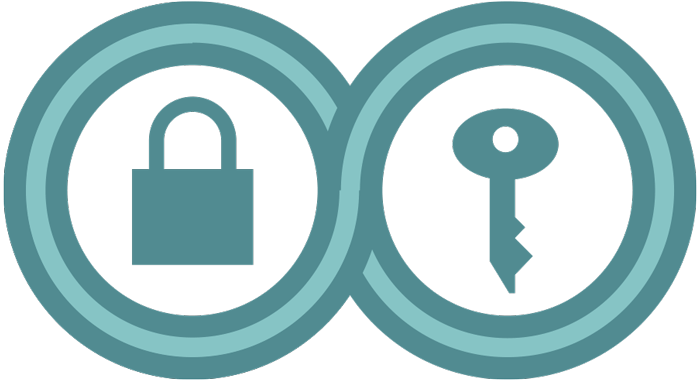与他人通信
最后更新: August 06, 2024
电信网络和互联网将人与人的沟通变得前所未有的容易,但监视也随之而来。不采取额外措施保护您的隐私,所有的电话、短信、电子邮件、即时消息、视频和语音聊天、社交媒体消息都很容易被窃取。
通常,最能保护隐私的沟通方式是面对面交流,完全不用电脑或手机。但这并不现实,那么第二安全的方式就是使用端到端加密。
端到端加密的原理是什么?
端到端加密确保消息被最初的发送者(第一“端”)变成密文,且仅可被最终的接收者(第二“端”)解码。这意味着没有人可以“监听”和窃取您的活动,包括公共 Wi-Fi 窥探、您的互联网服务提供商,甚至是您正在使用的应用程序。这是好的加密技术的核心特征:即使是其设计者和部署者也无法破解。
许多在 SSD 网站上提供指南的工具(包括 Tor、Signal、WhatsApp)都使用端到端加密。端到端加密可以用于任何类型的通信,包括语音和视频通话、消息收发和聊天、文件传输和电子邮件。
容易与端到端加密弄混的是传输层加密。端到端加密可以全程保护消息,例如从您到接收方的整个过程,而传输层加密仅在消息从您的设备传输到应用程序服务器,以及从应用程序服务器传输到接收方设备的过程中提供保护。在中途,您的消息传递服务提供商(或您正在浏览的网站或您正在使用的应用程序)可以看到未加密的消息,但不会被网络上的其他人监视。
基本上,端到端加密的工作原理如下:当 A 和 B 想要通过端到端加密来通信,他们必须各自生成一些数据,即密钥。这些密钥可以用于将谁都能读取的数据转变成只有拥有匹配密钥的人才能读取的数据。A 发消息给 B 之前,她将消息加密成 B 的密钥,这样就只有 B 能解密。然后,她将这条加密消息通过互联网发送出去。如果有人正在窃听 A 和 B,就算他们能访问 A 用于发送这条消息的服务(例如她的电子邮箱),他们只能看到加密后的数据,无法读取消息。当 B 收到时,他必须使用自己的密钥将其解密成可以读取的消息。
如需了解有关加密的更多信息,请参考“What Should I Know About Encryption?”(关于加密,我应该知道什么?)、“Key Concepts in Encryption”(加密的关键概念)和“A Deep Dive on End-to-End Encryption”(端到端加密的深入探讨)。
电话和文本消息与加密互联网消息的区别
使用固话或手机打电话时,通话不是端到端加密的。用手机发文本消息(即短信)时,文本完全不加密。使用这两种形式通信,政府或有权命令电话公司的任何人都能读取您的消息或者将您的通话录音。如果您的安全计划涵盖政府拦截,最好使用在互联网上操作的加密替代方案。这些加密替代方案大部分还提供视频通信。
Signal和WhatsApp 是最流行的两种提供端到端加密文本收发和语音及视频通话的服务。
默认不提供端到端加密的服务包括微信、Slack、Discord、Snapchat 和 QQ。
还有一些其他服务,有的需要特意打开端到端加密功能(比如 Telegram),有的只有两个用户都使用特定设备时才提供端到端加密(比如 iMessage,两个用户都必须使用 iPhone)。
消息服务是否值得信赖?
端到端加密可以防御政府、黑客和消息服务本身的监视。但是这些组织都能在您使用的软件中进行秘密更改,使得其即使声称使用端到端加密,实际上却以未加密或弱加密的方式发送您的数据。
包括 EFF 在内的多个组织致力于观察知名的服务提供商,如 Signal 或 WhatsApp(归 Meta 所有),以确保他们确实提供他们承诺的端到端加密。
还有一些其他聊天服务声称自己使用端到端加密,但如果不是开源或没有使用成熟的加密协议(例如 Signal 协议),并且过于小众以致安全研究者没有关注,就有可能存在一些使用风险。
有些工具将安全责任从第三方公司转移到您身上,例如 PGP 和 OTR,但它们已经逐渐被淘汰,并且往往需要技术专业知识才能安全运行。
端到端加密做不到的事
端到端加密只保护通信的内容,并不能掩盖您在通信这件事。它不保护元数据,而元数据包括您的通信对象和时间等信息。如果您用手机打电话,有关您所处位置的信息也是元数据。在一些应用程序里,甚至分享链接都会留下数字痕迹。
元数据可以透露很多有关您的信息,即使通信的内容没有泄露。理想情况下,只有通信提供商能看到这些元数据,但有时,政府机构等第三方可能索取这些数据。有关您通话的元数据可能会泄露一些非常私密和敏感的信息,即使通信的“内容”受到保护。例如,电信公司会知道:
- 您在金门大桥拨打了预防自杀热线。
- 您和 HIV 检测服务通过电话,然后打电话给医生,然后在不到一个小时的时间里又打电话给医疗保险公司。
- 您接到美国全国步枪协会当地办公室(正在开展反对枪支立法的运动)的电话,然后立即打电话给您的参议员和国会代表。
- 您打电话给妇科医生,聊了半个小时,之后还在当天拨打了当地计划生育组织的电话。
其他重要功能
端到端加密可以有效防止企业和政府擅自访问您的消息。但是对很多人来说,企业和政府并非最大威胁,因此端到端加密也许不是首选。
例如,有的人担心配偶、父母或雇主会拿到他们的设备,那么能够发送短暂存在的、会“消失”的消息也许是他们选择通信软件的决定性因素。还有人可能担心电话号码被泄露,那么能够使用非电话号码的“化名”可能很重要。很多端到端加密的聊天应用程序不仅可以加密,也提供上述全部功能,但还是要分清主次。
更广泛地来说,安全和隐私功能不是选择安全通信方式时要考虑的唯一变量。如果某个应用程序具有强大的安全功能,但您的朋友和联系人没人用它,那还是毫无意义;每个国家和社区最流行、使用最广泛的应用程序完全不同。如果某个国家只有一小部分人使用某个应用程序(例如 Signal),或者政府认为该应用程序仅用于特定目的,那么一旦使用该应用程序一事被发现,用户就会陷入危险。服务质量差或者要付费使用应用程序也会成为人们不用某个通信软件的原因。
越清楚地知道您希望和需要从安全通信方式中获得什么,面对广泛、相互冲突且有时过时的海量信息时就越轻松。
